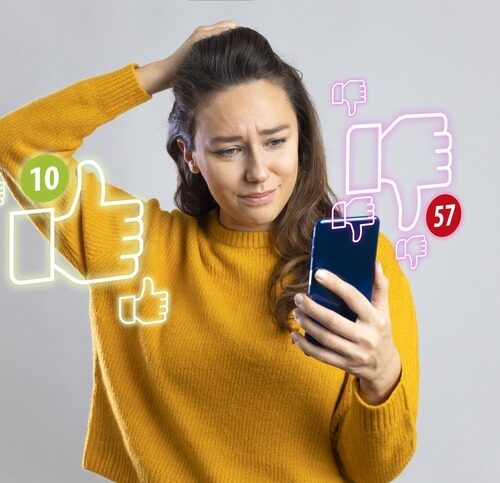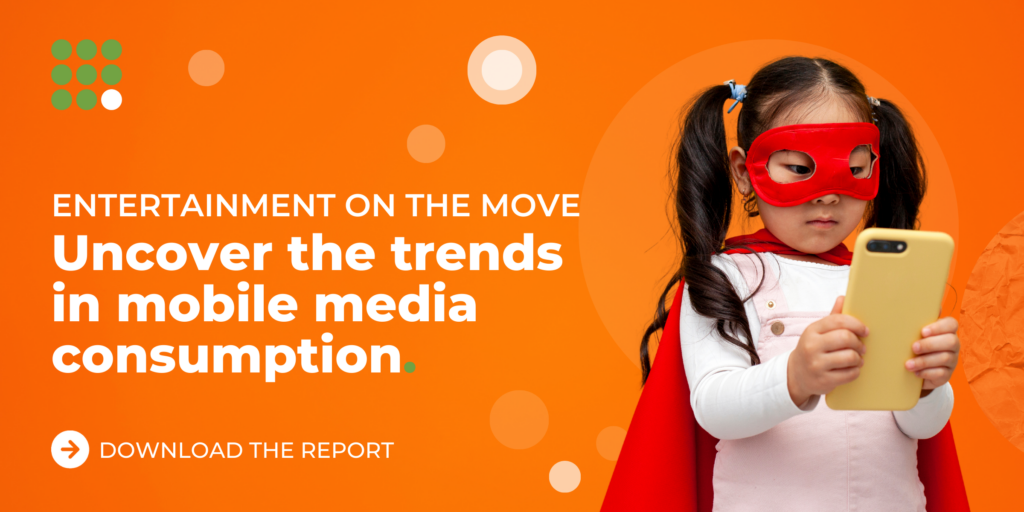It started, as most viral purchases do, with a swipe. A TikTok creator with flawless skin and fluorescent lighting demonstrated a compact beauty gadget that promises salon-grade results at home. The video was less than a minute long, filled with upbeat music, quick cuts, and glowing testimonials in comments. Within minutes, a viewer – perhaps a student in Manila, a young professional in Manchester, or a stay-at-home parent in Chicago – clicked through the in-app link and completed the purchase.
By the time the package arrived a few days later, the product had already lost its mystique. A single-use, maybe two, followed by quiet abandonment. The device now sits in a drawer, a fleeting artifact of a momentary high. It’s a pattern playing out on repeat across millions of screens and households.
Welcome to the world of #TikTokMadeMeBuyIt, a phenomenon that has exploded to over 80 billion views and counting. Entire product categories – skincare tools, cleaning gadgets, oddly shaped kitchenware – are being built and sold off the back of short-form content engineered to trigger impulse buys. For brands, the promise is irresistible: high engagement, lightning-fast conversions, and instant exposure to global audiences.
But with that promise comes a growing problem. Post-purchase regret is creeping in, and repeat purchase rates remain elusive. Products go viral, but not necessarily for the right reasons – or to the right audiences. Shoppers buy on a dopamine rush, not because of need or brand loyalty. When the dust settles, many never buy again.
This is the paradox of TikTok commerce: it’s brilliant at driving desire but shaky at sustaining satisfaction. As marketers lean into creator campaigns and trending formats, a harder question emerges: What happens after the impulse fades? How can brands transform a fleeting moment of virality into lasting consumer value?
The answer requires looking past the algorithm – and into the mindset of the modern, post-swipe shopper.
The Rise of Social-First Shopping
The act of shopping has always been tethered to some form of discovery – what’s new, what’s desirable, what solves a problem. Traditionally, that discovery began with intent. Consumers searched for what they needed – on Google, Amazon, or a brand’s own website – then navigated through specs, reviews, and comparisons to make a decision.
But today, especially among younger demographics, the discovery process is being rewritten – and TikTok is the new front door.
According to a 2023 survey by Adobe, over 40% of Gen Z users in the U.S. now use TikTok as a search engine, turning to short videos for everything from product reviews and tutorials to restaurant recommendations and tech hacks. A Google executive famously acknowledged that nearly half of Gen Z prefers TikTok or Instagram over Google for local search and ideas. And it’s not limited to the West – DataReportal’s 2024 global digital trends report shows similar patterns in Southeast Asia, where TikTok is already a leading platform for beauty and lifestyle discovery in markets like Indonesia, the Philippines, and Thailand.
This shift from intent-based to content-led shopping represents more than a change in channel. It marks a transformation in the psychology of the buyer journey. Consumers aren’t searching because they know what they want. They’re swiping through content, waiting to feel something. The algorithm does the rest – serving a stream of product demos, creator endorsements, and “must-have” items that feel personal, unscripted, and trustworthy.
The mechanism driving this new model is emotional storytelling – often through creators who speak directly to their audience as peers, not salespeople. There’s no hard pitch. Instead, there’s relatability, humor, vulnerability. A creator casually shares how a sleep spray changed their nighttime routine, or how a multi-use blender made morning smoothies easier. The product isn’t the focus – it’s part of a lifestyle narrative. And because the platform is optimized for short-form engagement and rapid feedback, the reward loop is instantaneous. Users like, share, comment, click – and often buy – without leaving the app.
This is particularly powerful in categories that lean into aesthetics, performance, or transformation. Beauty, fashion, wellness, gadgets, and kitchenware dominate the #TikTokMadeMeBuyIt trend because they demonstrate well on video and promise immediate change or convenience. A pore vacuum that clears blackheads in seconds. A wearable fan for summer commutes. A viral foundation that “melts” into your skin. These products are engineered for visual impact – and often experience a sales spike within hours of trending.
Brands are scrambling to meet this shift. In the U.S., retailers like e.l.f. Beauty and Glow Recipe have embraced TikTok not just as an advertising platform, but as a product incubator. Viral feedback is used to iterate faster, launch new SKUs, or create limited drops tailored to what’s trending. In the UK, Boots and ASOS have established creator partnerships and in-app shopping hubs designed specifically for TikTok users. Meanwhile, in Southeast Asia, TikTok Shop has integrated payment and delivery into the app itself, offering a seamless purchase experience – and challenging traditional ecommerce giants in the region like Shopee and Lazada.
Yet this rise of social-first shopping is not without friction. What works in a 60-second video doesn’t always translate to long-term product satisfaction. And while the buying journey may begin in a feed, it doesn’t always end in a positive review – or a second purchase. The next challenge for brands is not just to capture attention in the scroll, but to justify the decision after the impulse fades.
The dopamine of discovery is real. But for brands, it’s what happens next that determines whether a TikTok sale becomes a customer – or just a view that briefly converted.

The Retention Cliff: From Click to Regret
For brands riding the wave of TikTok virality, the first 24 hours can feel like a triumph. Products sell out, follower counts spike, and warehouses scramble to restock. But beyond the euphoria of the initial surge lies a less glamorous truth: a vast number of these purchases don’t lead to loyalty. Many don’t even lead to usage.
Return rates for impulse-driven social commerce are difficult to pin down, but anecdotal reports from retailers and logistics firms suggest a growing pattern of disappointment, disuse, or buyer’s remorse. A 2023 survey by Coresight Research found that 35% of Gen Z consumers regretted at least one purchase they made via TikTok or Instagram – not because of price, but because the product didn’t live up to the hype, was rarely used, or was simply forgotten.
The psychology behind this regret is well-documented. Neurologically, impulse buying activates the brain’s reward system, delivering a short-lived hit of dopamine. The problem is that platforms like TikTok are engineered to optimize this very sensation – quick visuals, emotional narratives, and social proof in the form of comments and likes. Consumers experience the thrill of discovery and the convenience of one-click purchasing simultaneously. But once the package arrives, the context disappears. The content that made the item feel urgent is gone, and the user is left with a product that may not fit their life – or their expectations.
This dissonance is particularly acute in categories like beauty and wellness, where perceived effectiveness can vary dramatically by individual. A trending skincare serum might go viral for its packaging or influencer endorsements, but fail to deliver visible results. A portable blender could be lauded for design, but prove impractical in daily use. These mismatches feed into a broader trend of one-time TikTok purchases that rarely lead to second sales.
For businesses, this is more than a retention problem – it’s a strategic misalignment. The traditional ecommerce funnel assumes that satisfaction leads to loyalty. But in the TikTok ecosystem, the funnel is often truncated. Discovery and conversion happen in seconds, often without critical evaluation or consideration of product fit. Post-purchase, there’s often no follow-up, no onboarding, and no effort to transition the buyer from intrigued to invested.
Consider the case of “miracle” gadgets – a segment that consistently trends on TikTok. From LED face masks to handheld fabric shavers, these products generate excitement because they solve specific problems quickly, and they look satisfying on camera. But many of them fall into what analysts call “low utility, high novelty” territory. They may work, but they rarely become essential. Without repeat use, there’s no brand affinity. Without brand affinity, there’s no return visit.
Even the most experienced marketers are struggling with how to measure value in this environment. A viral video might generate millions in sales, but if the average customer doesn’t return, the cost of acquisition outweighs long-term gain. This is particularly risky for startups that build their entire go-to-market strategy around influencer momentum. When the virality fades, so does the revenue.
To navigate this cliff, brands must expand their thinking. The point of conversion is no longer the endpoint – it’s the beginning of a new challenge: how to turn a moment of entertainment into a meaningful, lasting consumer relationship. This requires more than a clever TikTok strategy. It requires rethinking product positioning, support systems, and post-purchase engagement.
Because if the first purchase ends in disappointment, it won’t just be the product that gets left in the drawer – it’ll be the brand.
What TikTok Teaches (and Misleads) About Product-Market Fit
In the traditional product development model, product-market fit is discovered through cycles of research, iteration, and real-world validation. Success is measured by sustained demand, positive feedback, and repeat purchases. But TikTok has disrupted that rhythm – catapulting products to viral fame before they’ve had a chance to prove long-term relevance.
TikTok doesn’t reward utility or staying power. It rewards novelty, visual appeal, and story potential. Products that go viral tend to be those that photograph well, demonstrate instantly, or slot neatly into an aesthetic. That doesn’t necessarily mean they solve real problems – or that they’re designed to endure.
Consider the wave of viral beauty tools: ice rollers that promise depuffing, LED masks that hint at spa-quality treatments, pore vacuums that visibly extract blackheads. These products generate enormous buzz because they produce quick visual results on camera. But behind the screen, many lack clinical efficacy, are inconvenient to use, or break easily. A purchase may follow a single swipe, but it’s not often followed by a second.
This isn’t to say TikTok can’t uncover genuine product-market fit. Some brands have used it as a real-time feedback engine. Stanley tumblers, for instance, didn’t go viral for being flashy – they went viral because users demonstrated their durability and insulation performance. Real utility was amplified by real stories. In another case, COSRX’s snail mucin skincare product surged globally because users documented consistent results, not just cute packaging or influencer endorsement.
Still, these examples are the exception. More often, TikTok leads brands to confuse buzz with validation. A video’s reach can feel like a green light, prompting restocks, ad spend, and even new product lines before customer satisfaction has caught up. The platform’s velocity compresses timelines and encourages decisions based on engagement metrics rather than behavioral insights.
This misalignment is particularly dangerous for early-stage brands. A viral product can mask foundational weaknesses – limited product testing, supply chain fragility, or unclear positioning. By the time returns spike or negative reviews roll in, it’s too late. The algorithm has already moved on.
Brands that rely too heavily on TikTok as a market validator risk losing touch with their core consumer. Metrics like view counts, shares, or comments provide signals, but not substance. They don’t replace the discipline of product testing, customer interviews, or retention analysis.
The real opportunity lies in combining TikTok’s reach with traditional rigor. Use viral attention as a signal to dig deeper: Who is buying? Why? Are they returning? Would they recommend the product without the hype?
Because TikTok can light the match – but product-market fit is still the fire that must burn long after the trend cools.
Designing for the Second Purchase
The first purchase may be won by a scroll and a swipe. The second is earned – slowly, deliberately – through trust, value, and consistency. For brands seeking sustainable growth beyond the TikTok boom, retention is no longer a back-end metric – it’s a product design imperative.
The most successful consumer brands on TikTok are not those that simply sell well in a 15-second clip. They’re the ones that understand the post-viral customer journey and intentionally build for re-engagement. This starts with setting expectations early. In an environment where storytelling trumps specification, it’s tempting to lean into aspirational content or exaggerated claims. But overselling a product, even indirectly through creator enthusiasm, leads to a trust deficit if the product underdelivers.
That’s why transparency has become a powerful retention strategy. Beauty brand Function of Beauty – which customizes shampoo and skincare based on user profiles – leans into detailed user education across its platforms. TikTok may drive the click, but the website follows up with quizzes, how-to videos, and community reviews, helping buyers understand what they’re getting and why it matters. This reduces post-purchase doubt and creates more informed, loyal users.
Similarly, the unboxing and onboarding experience has become a crucial moment for loyalty. What happens in the first 10 minutes after the package arrives often determines whether the product will be used again. Packaging that educates, instructions that are intuitive, and apps or QR codes that reinforce usage habits all play a role. Brands like Glow Recipe include usage tips and layering instructions in their packaging inserts – offering a tactile bridge between online excitement and offline satisfaction.
Customer support is another pivotal lever. In the TikTok era, customer service is not a cost center – it’s content. A quick, empathetic response to a complaint shared publicly can diffuse tension and even boost brand favorability. A user who feels heard is far more likely to return, even after a misstep. Some brands proactively monitor TikTok mentions to identify potential issues before they escalate – a form of customer care that feels organic, not outsourced.
But perhaps the most overlooked retention strategy is narrative continuity. Too often, brands treat each TikTok moment as a one-off campaign. Instead, successful companies develop a story arc that encourages repeat engagement. Korean skincare brand COSRX, for example, has built TikTok content around long-term skincare routines rather than single products. This strategy not only keeps users coming back but also positions the brand as a partner in progress – not just a purveyor of trends.
Product ecosystems also matter. Brands that offer bundling, refills, or complementary products increase the likelihood of repeat purchases. A consumer who buys a viral water bottle may return for accessories, cleaning kits, or seasonal drops. A wellness brand that offers a subscription model – accompanied by timely reminders and rewards – can convert impulse buyers into habitual users.
Ultimately, designing for the second purchase requires a mindset shift: from campaigning to cultivating. It’s not enough to convert interest into sales. Brands must convert experience into trust, and trust into habit.
That means the real work begins after the trend peaks. When the influencers move on and the algorithm shifts, what remains is the quality of the product, the clarity of the experience, and the commitment to serving customers beyond the first impression.
Because in the long arc of brand building, it’s not the first click that matters most. It’s the one that comes after they’ve already tried you – and decide to come back.
Virality Is a Spark, but Trust Is the Flame
If TikTok has taught us anything, it’s that attention is no longer scarce – but intention is. In a world where discovery happens in seconds, brands can no longer afford to confuse visibility with viability. The speed and scale of social commerce have made it deceptively easy to move product. But moving product is not the same as moving people.
The brands that will endure are not the ones that win the algorithm today – they’re the ones that understand why the algorithm worked in the first place, and what happens when it doesn’t. That requires more than creative output. It demands input – specifically, research that maps impulse against behavior, and curiosity against conversion.
Strategy in this new era must be grounded in consumer foresight, not just content performance. Which products trigger regret? Which creators sustain trust? What conditions turn first-time buyers into lifelong customers? Without this insight, brands will remain reactive – chasing trends that spike but don’t stick, and mistaking engagement for endorsement.
Social commerce is not a trend. It’s a fundamental restructuring of how consumers find, evaluate, and commit to brands. But the platforms themselves are still evolving, and consumer expectations are outpacing the infrastructure that surrounds them. What’s needed now is a deeper layer: systems for listening, testing, validating, and optimizing – before, during, and after the trend hits.
This is where market research is no longer a support function – it becomes a strategic core. The ability to test message resonance, prototype digital experiences, and measure post-purchase satisfaction in real time is what will differentiate high-growth brands from high-churn ones. Those who invest in insight will adapt faster, course-correct smarter, and build the emotional capital that virality alone can’t deliver.
Because in the economy of attention, the spark may come easily. But it’s the slow, intentional burn – fed by relevance, reliability, and research – that keeps consumers coming back.
That’s not the algorithm’s job. It’s yours.
Get regular insights
Keep up to date with the latest insights from our research as well as all our company news in our free monthly newsletter.





 Senior Marketing Executive
Senior Marketing Executive Sales & Marketing
Sales & Marketing General Manager PR -Internal Communications & Government Affairs
General Manager PR -Internal Communications & Government Affairs Vital Strategies
Vital Strategies
 Customer Intelligence Director
Customer Intelligence Director